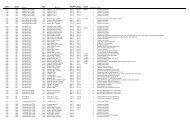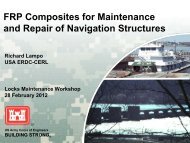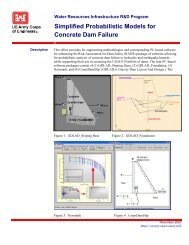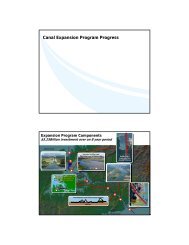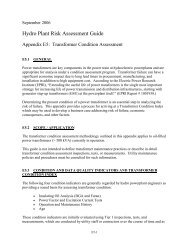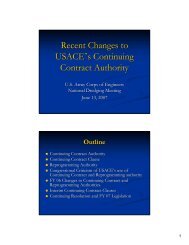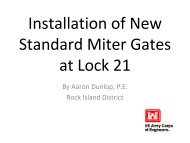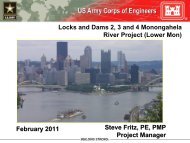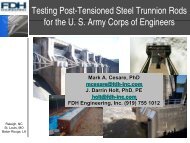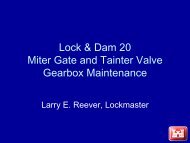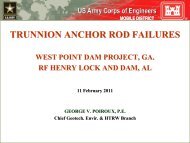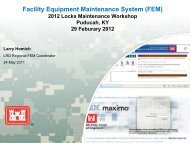Hydro Plant Risk Assessment Guide
Hydro Plant Risk Assessment Guide
Hydro Plant Risk Assessment Guide
Create successful ePaper yourself
Turn your PDF publications into a flip-book with our unique Google optimized e-Paper software.
following indicators are used to separately evaluate the condition of the gates or valves and their<br />
associated operator:<br />
• Age<br />
• Physical Condition – Gates/Valves<br />
• Physical Condition – Operators<br />
• Operations History<br />
• Maintenance History<br />
These condition indicators are initially evaluated using Tier 1 inspections, tests, and<br />
measurements, which are conducted by utility staff or contractors over the course of time and as<br />
a part of routine maintenance activities. Numerical scores are assigned to each condition<br />
indicator, which are then weighted and summed to determine the overall Emergency Closure<br />
System Condition Index.<br />
An additional stand-alone indicator is used to reflect the quality of the information available for<br />
scoring the condition indicators. In some cases, data may be missing, out-of-date, or of<br />
questionable integrity. Any of these situations could affect the accuracy of the associated<br />
condition indicator scores as well as the validity of the overall Emergency Closure System<br />
Condition Index. Given the potential impact of poor or missing data, the Data Quality Indicator<br />
is used as a means of evaluating and recording confidence in the final Emergency Closure<br />
System Condition Index.<br />
Additional information regarding gate, valve and associated operator condition may be necessary<br />
to improve the accuracy and reliability of the Emergency Closure System Condition Index.<br />
Therefore, in addition to the Tier 1 condition indicators, this appendix describes a “toolbox” of<br />
Tier 2 inspections, tests, and measurements that may be applied to the Emergency Closure<br />
System Condition Index, depending on the specific issue or problem being addressed. Tier 2<br />
analyses are considered non-routine. However, if Tier 2 data is readily available, it may be used<br />
to supplement the Tier 1 assessment. Alternatively, Tier 2 tests may be deliberately performed<br />
to address Tier 1 findings. Results of the Tier 2 analysis may either increase or decrease the<br />
score of the Emergency Closure System Condition Index. The Data Quality Indicator score may<br />
also be revised during the Tier 2 assessment to reflect the availability of additional information<br />
or test data.<br />
The Emergency Closure System Condition Index may indicate the need for immediate corrective<br />
actions and/or follow-up Tier 2 testing. The Emergency Closure System Condition Index is also<br />
suitable for use as an input to the risk-and-economic analysis model.<br />
Note: A severely negative result of ANY inspection, test, or measurement may be adequate in<br />
itself to require immediate corrective action, regardless of the Emergency Closure System<br />
Condition Index score.<br />
E1.4 INSPECTIONS, TESTS, AND MEASUREMENTS<br />
Inspections, tests, and measurements should be conducted and analyzed by staff suitably trained<br />
and experienced in the equipment being inspected. The more basic tests may be conducted by<br />
E11-2



